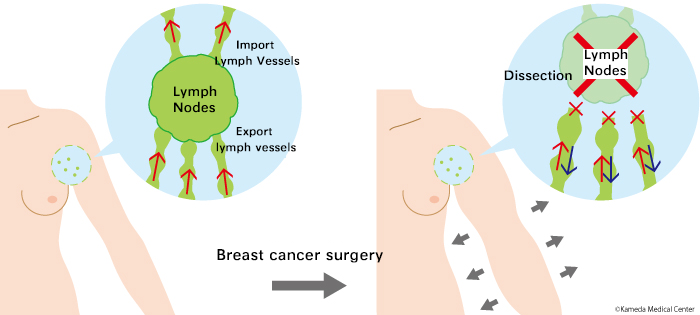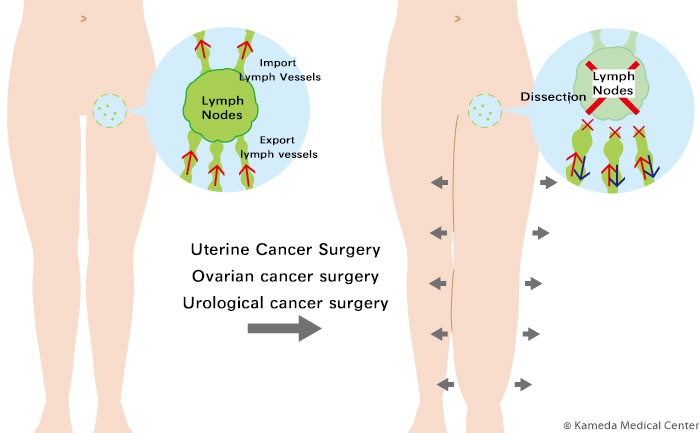Cases, Onset, Progression and Symptoms ①
Lymphedema can be classified into two major categories according to the situation and cause:
- Idiopathic lymphedema of unknown cause, including congenital ones
- Secondary lymphedema, where the cause can be clearly attributed as an after-effect of surgical treatment for cancer, radiation therapy, trauma treatment, etc.
In this section, We will talk about secondary lymphedema after cancer treatment, which is the most common type of lymphedema.
Causes of lymphedema
During surgery for cancers such as breast cancer, uterine cancer, and ovarian cancer, the lymph nodes near the lesion are removed (lymph node dissection) based on preoperative examinations and intraoperative findings while taking into consideration of the cancer’s metastasis. the lymph nodes where many lymph vessel cluster are removed, the lymphatic fluid, or lymphatic flow through the lymph vessels, becomes stagnant, resulting in swelling. In addition, the lymphatic reflux function is reduced, and the lumen of the lymph vessels becomes blocked or disappears, worsening the edema.


Edema has been reported to develop in approximately 10-20% of patients who have had lymph node dissection during breast cancer surgery and in approximately 30-35% of patients who have had lymph node dissection during gynecologic cancer surgery. In addition, the rate of occurrence has been found to be higher with additional radiation therapy and certain chemotherapies.

林明辰Akitatsu Hayashi
龟田总合医院/龟田京桥诊所
淋巴水肿中心 院长
世界上首次宣布使用超音波与干涉断层扫描(OCT)的尖端淋巴管形成技术。我们专注于使用此技术传播更有效的淋巴水肿手术。



